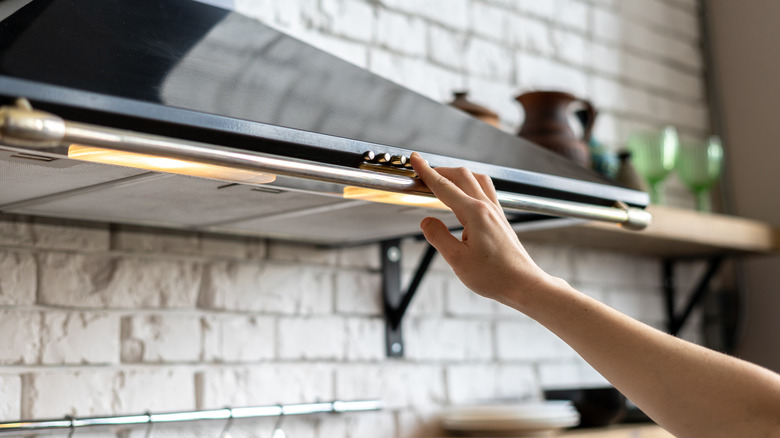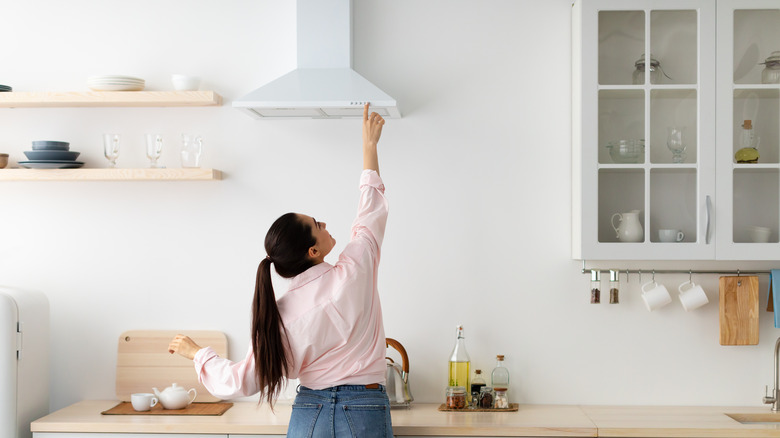How To Use Your Kitchen's Vent Hood To Cool Down Your Home This Summer
Whether you're a cook who fancies a fish fry, the type who loves to sear on scorching heat, or a forgetful foodie who fills a room with smoke, kitchen vent hoods are a tool as practical as a pan. Vent hoods, also called range hoods, can be the statement piece for your entire space, and they're vital to keeping the air inside your home smelling fresh and free of smoke and grease. These hoods can also be helpful on hot summer days when it feels like the kitchen just won't cool.
Vent hoods utilize a small motor and fan blades to pull in the air around them. Most often, that air is filled with invisible remnants of your latest recipe, including the heat generated by the stovetop or oven. Removing that air inevitably cools down the kitchen after it's been housing a hot oven. That same concept works during the summer months too, even when you're not cooking.
If one of the kids left the back door open, or you left a window up on a sweltering afternoon, turn the vent hood on to dispel that air before it makes its way to the rest of the house. The range hood's power can't extend too far beyond the cooking area, but every bit helps when the temperature outside is high enough to serve as an outdoor cooktop.
Only ducted hoods can truly cool a room
There is a caveat, of course, to using a vent hood as a cooling aid — this will only work with a ducted version, not a ductless. Ducted range hoods collect fumes and then vent them outside the home via a wall or ceiling duct. A ductless option also pulls in air, grease, and smoke, but instead of venting them outward, it circulates those fumes through an internal filter system and blows the air back into your kitchen. You'll get clean, odorless air in return, but the air won't be much cooler than when it first went into the system.
So while ductless vent hoods are cheaper and easier to install than their ducted counterparts, they cannot serve a dual purpose. The good news is that existing ductless hoods can be converted into ducted hoods. The complexity of that change depends on the location of the hood compared to its wall or ceiling access. You'll want to consult a professional for a full scope of the project. If you're installing a new vent hood, there are models available that allow you to install the hood as either ducted or ductless, depending on the needs of your space.
Why a vent hood's motor capacity matters when cooling
A vent hood's ability to cool a room will rely heavily on its CFM capacity. That number measures how much cubic feet of air can be exhausted by the hood in one minute when turned to its highest speed. The higher the number, the greater the air intake and thus, the more hot air it can capture and expel. The vent hoods of residential kitchens typically use between 500 and 1,000 CFM, though it can go lower or higher depending on the size of the stove.
If you do plan to work your range hood as a cooling mechanism, you'll want to be careful with prolonged usage. The motor of such an appliance is not designed to stay on all the time, and some models will wear down quickly. When that happens, you'll be left with a costly repair or replacement. Most vent hoods shouldn't be left on for more than an hour or two. It's also best to leave it on the lowest fan speed during that time. Regular cleaning of its internal components is also a helpful way to make your range hood last since the appliance is so often subjected to grease and smoke.



